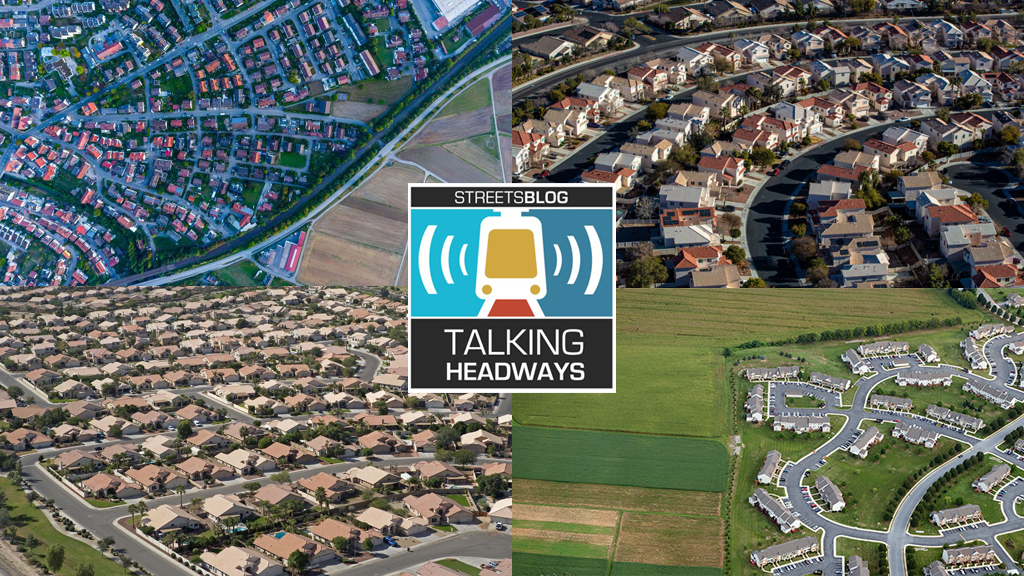This week, we’re joined by Zack Subin of the Terner Center for Housing Innovation and Ben Holland of the Rocky Mountain Institute. Ben and Zack join us to talk about their report Urban Land Use Reform on the importance of land use in reducing travel and emissions.
It's a great topic, but the funny thing, some people simply prefer to read. So if you want to peruse the conversation, a slightly edited transcript is below the audio player. But if you're one of those people who has time to really nerd out, check out the full unedited transcript here.
Here you go.
Jeff Wood: Let’s talk about your report: When talking about climate action, why is land use so important when we’re trying to reduce transportation emissions?
Ben Holland: One of the reasons why we put out this report is that, intuitively, most people or most policy makers understand that compact, connected communities are better for the environment. But those policymakers typically lack the data or sort of a defensible argument from a climate perspective for pursuing land-use reform. So we wanted to actually quantify the benefits from a vehicle miles traveled-reduction perspective as well as a number of other co-benefits, the benefits of instituting land-use reform and illustrate what that would look like at the city level. So we chose three rapidly growing cities: Austin, Charlotte and Denver, and developed a sort of business-as-usual suburban single-family-driven growth scenario.
And then we developed a counterfactual with a heavy emphasis on infill development, transit-oriented development, and a broad upzoning — and really just painted that onto the metropolitan areas. Then, it spit out the metrics of VMT reduction: it's about 13 percent VMT reduction per capita, a 16 percent building energy-use reduction and a 14 percent reduction in greenhouse gas emissions.
But the biggest finding for us was really the land consumption benefits. So compared to the sort of business’ usual growth forecast, our sort of smart growth scenario reduced land consumption by up to 82%, sort of incremental land consumption.
Zack Subin: One thing to keep in mind is those percentage savings for the vehicle miles traveled for the building energy and for building and vehicle emissions are with respect to the whole metro region, including all the people that are already living there who are basically not touching anything in these scenarios, plus the new people. So, per new home, you’re actually saving a much higher proportion — and it’s because these cities are adding potentially so many new people that you really get a significant improvement at the whole metro scale.
Jeff Wood: One of the things that struck me was basically there’s a flaw in climate action plans in these fast-growing cities.
Zack Subin: I always like to bring it back to San Francisco because it’s the most walkable compact city we have on the west coast. Chris Jones also at the University of California Berkeley has done some foundational work on the benefits of urban infill from a climate perspective, meaning adding housing to existing neighborhoods in places where people tend to have access to lower carbon ways of living, you can walk to places, buildings are more compact, that means they have more shared walls. So you have less building energy consumption, fewer building materials use and, of course, you’re consuming a lot less acreage per person.
So if San Francisco hired a consultant to model its climate action plan, typically it would draw a boundary around the city and say, "Here are the emissions physically being emitted within this boundary and here’s a way we can bring these down over time." The problem is, per person, we’re emitting a lot less in San Francisco than a more suburban part of the Bay Area or most of the rest of the country. So, if San Francisco needs to build 80,000 homes according to state policy targets that the city has agreed to, that’s going to make emissions go up, according to this accounting, even though it will save more than that elsewhere.
But carbon dioxide is a global pollutant. It’s going to make emissions go down to add more housing to San Francisco, but the accounting that we normally use will just say that the emissions go up and you can help by doing it per capita. But it doesn’t totally answer the question. And I’ve yet to see a city climate action plan address this quantitatively. San Diego had a good example a year or two ago that at least rhetorically emphasized the importance of adding housing within the city for these reasons and stopping new super commuting and all that kind of stuff.
But we don’t necessarily have a great off-the-shelf accounting framework, you know, besides kind of the template from Chris Jones that that could be built upon for cities to actually put it on the same level of precision as the other strategies in their climate action plan. So that might be something that I might work on, you know, area for further research. But right now, the tools that we have is to do this at least at a metro region scale using a model like Urban Footprint or a similar model to actually capture some of these benefits.






